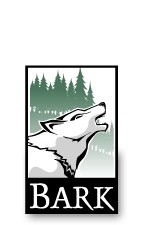Bear Cub
We are very sad to report that the Bear (a.k.a Bear II) timber sale has been logged. It 's heartbreaking to have to share this. Seven of the logged units are in Northern spottd owl Critical Habitat.
General Info
- District: Clackamas
- Total Acres: 207
- Watershed: Upper Clackamas
- Sub-Watersheds: HunterBerryCub Creek
- Basic Location: West of the Upper Clackamas, south of 4671, east of Hawk Mountain, almost all the way to the southern forest boundary
- Driving Directions: Bear Take 224 past Estacada. At junction of 57 and 46, turn towards 46. Stay left at junction with 63. 3 Options 1) Take a right at 4650//4670. Turn left onto 4670. At junction with 4670/4671 turn left on 4671. 2) Stay on 4670 to junction with 4672, turn left. Units are north and south of junction of 4671 and 4672. 3) Or stay on 46 until junction with 4672, take a left on 4672.Cub Take 46 south. Right on 6350. Units above 6350 to West of 46 and off to the south of 6350.
- Legal Description: T8S, R8E sect. 30 T8S, R7E sect. 10-14, 23-27 T9S, R7E sect. 1, 2, and 12 T9S, R8E sect. 6 and 7
- Northwest Forest Plan Classification: Matrix
- LMRP (Forest Plan) Land Management Classification: C1B2, B11
- Old Growth Units: 13,14,15,21,bear 8, bear 12, bear 2,
- Total MMBF: 7.613
- Total CCF: 11638.64
Timber Sales
- Bear II (68 Acres, 3.48 MMBF, 4277.64 CCF)
Sold on Jun-04-2004 to Herbert
Status: Logged - Cub (139 Acres, 4.133 MMBF, 7361 CCF)
Sold on Jan-17-2003 to Freres
Status: Sold, but not logged
Prescriptions
- Total Regeneration Acres: 206
- Total Commercial Thin Acres: 263
- "Purpose & Need:" The project area contains stands which are growing slowly are diseased and are exposed to repeated storm events which continually damage trees and blow them down. ' 'The objective of the project is to regenerate stands by removing most of the trees and preparing the site for planting. This conversion would result in young productive stands which are capable of growth commensurate with the site 's potential. ' What this argument states is that old growth forest areas grow slowly. Therefore we should cut older forests down and plant young trees that grow quickly. This values forests only for their use for timber production.On Thinning 'Within the planning area there are some stands of second growth trees that are experiencing a slowing of growth due to overcrowding. Approximately 69 acres of 70 year old natural second growth are currently overstocked. If left unaltered this overstocked condition would result in continued reduction of net annual growth and result in stands with reduced vigor and increased mortality. '
Roads
- Road Comments: Temporary roads would be built. Portions of road 46 and other haul roads are in need of surface reconstruction.
Habitat & Species
- S&M Species: Corydentris aquae-gelidaeBotrychium montanum
- T&E Species: Spotted Owl 1997 Bi-OpSpotted Owl CHU OR-13Peregrine Falcon
- Other Species: deer and elkpine martenpileated woodpecker
Restrictions
- 10/1-7/1 : No ground based. Restricted Units: 3,5,6,7,8,10,12,13,15,18,20,21,22,23,24, 25
- 4/1-7/1 : road construction, harvesting. Restricted Units: 5
- 5/15-7/1 : road construction. Restricted Units: 5, 18, 20, 21 25
- 3/1-7/1 : No harvest operations, road construction, use of motorized equipment or blasting . Restricted Units: 12
- 3/1-8/15 : No harvest operations, road construction, helicopter flight, or blasting . Restricted Units: 18, 19 and 25
Updated 5/7/09


















